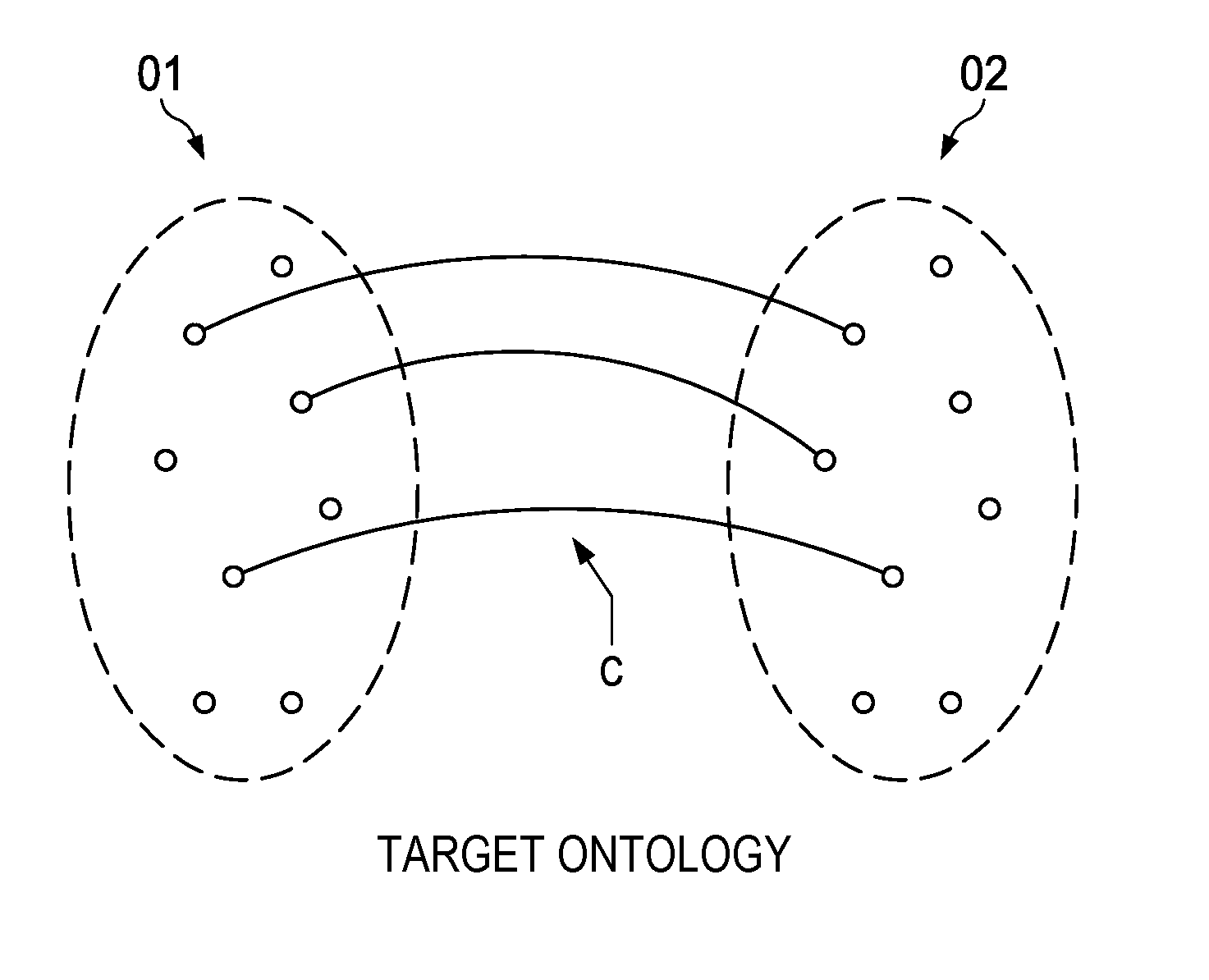Method of composing an ontology alignment
a technology of ontology alignment and alignment method, which is applied in the field of composing an ontology alignment, can solve the problems of inability to create appropriate sub-ontologies, insufficient single ontology, and inability to use complex methods for ontology alignmen
- Summary
- Abstract
- Description
- Claims
- Application Information
AI Technical Summary
Benefits of technology
Problems solved by technology
Method used
Image
Examples
Embodiment Construction
[0017]According to various embodiments, a method for composing an ontology alignment for a plurality of ontologies, may comprise:[0018]providing at least one source ontology from a first memory unit, the source ontology including a plurality of structured information entities;[0019]providing at least one target ontology from a second memory unit, the target ontology including a plurality of structured information entities;[0020]processing a set of correspondences between at least one of said structured information entities of said source ontology and at least one of said structured information entities of said target ontology by applying at least one of a plurality of mapping functions;[0021]at least partially restricting said set of correspondences by applying at least one of a plurality of filtering functions;[0022]for each of said correspondences assigning an identifier for each mapping function and each filtering function being applied to provide said correspondence;[0023]compos...
PUM
 Login to View More
Login to View More Abstract
Description
Claims
Application Information
 Login to View More
Login to View More - R&D
- Intellectual Property
- Life Sciences
- Materials
- Tech Scout
- Unparalleled Data Quality
- Higher Quality Content
- 60% Fewer Hallucinations
Browse by: Latest US Patents, China's latest patents, Technical Efficacy Thesaurus, Application Domain, Technology Topic, Popular Technical Reports.
© 2025 PatSnap. All rights reserved.Legal|Privacy policy|Modern Slavery Act Transparency Statement|Sitemap|About US| Contact US: help@patsnap.com



